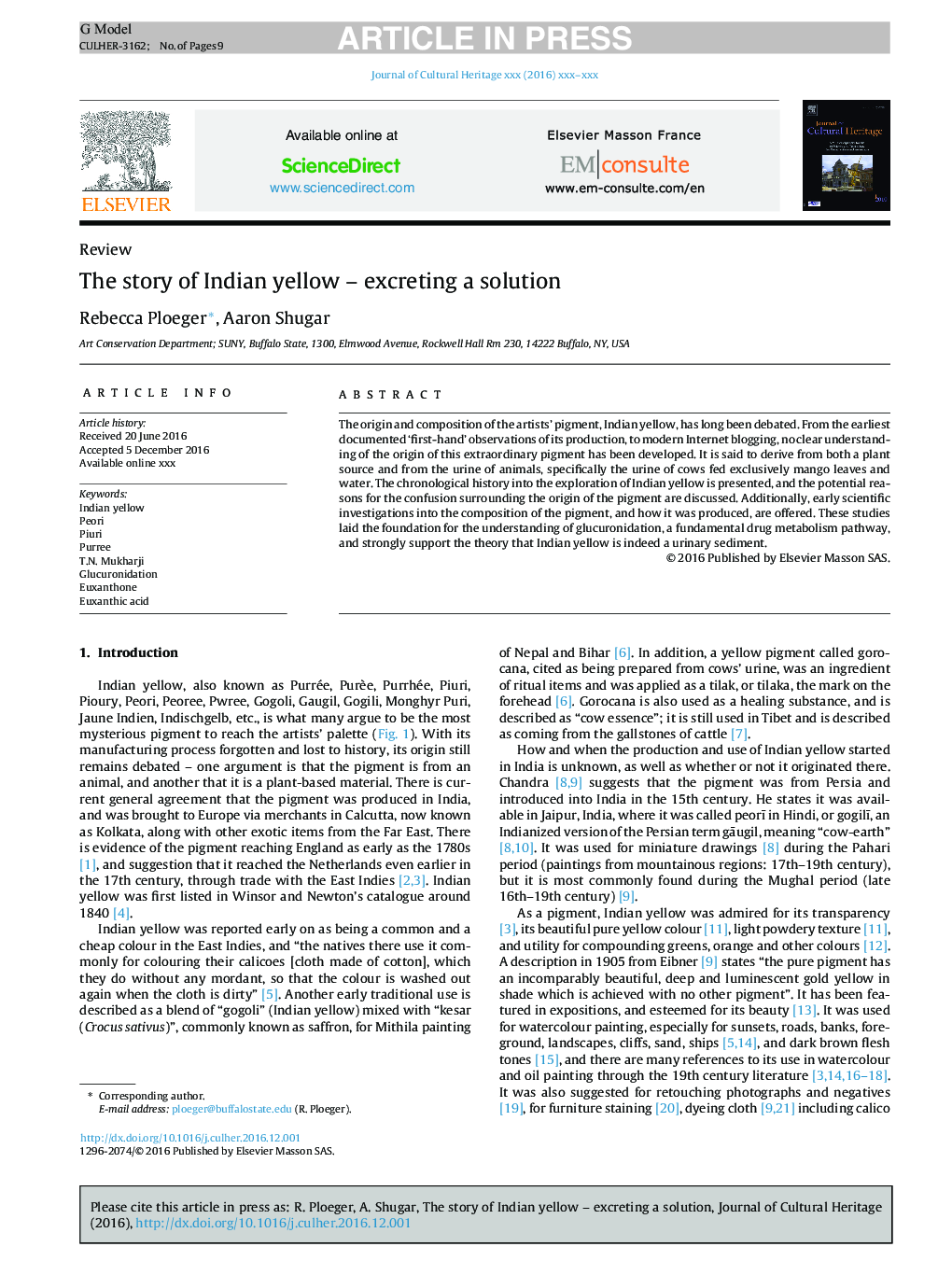| Article ID | Journal | Published Year | Pages | File Type |
|---|---|---|---|---|
| 5112687 | Journal of Cultural Heritage | 2017 | 9 Pages |
Abstract
The origin and composition of the artists' pigment, Indian yellow, has long been debated. From the earliest documented 'first-hand' observations of its production, to modern Internet blogging, no clear understanding of the origin of this extraordinary pigment has been developed. It is said to derive from both a plant source and from the urine of animals, specifically the urine of cows fed exclusively mango leaves and water. The chronological history into the exploration of Indian yellow is presented, and the potential reasons for the confusion surrounding the origin of the pigment are discussed. Additionally, early scientific investigations into the composition of the pigment, and how it was produced, are offered. These studies laid the foundation for the understanding of glucuronidation, a fundamental drug metabolism pathway, and strongly support the theory that Indian yellow is indeed a urinary sediment.
Related Topics
Physical Sciences and Engineering
Chemistry
Physical and Theoretical Chemistry
Authors
Rebecca Ploeger, Aaron Shugar,
